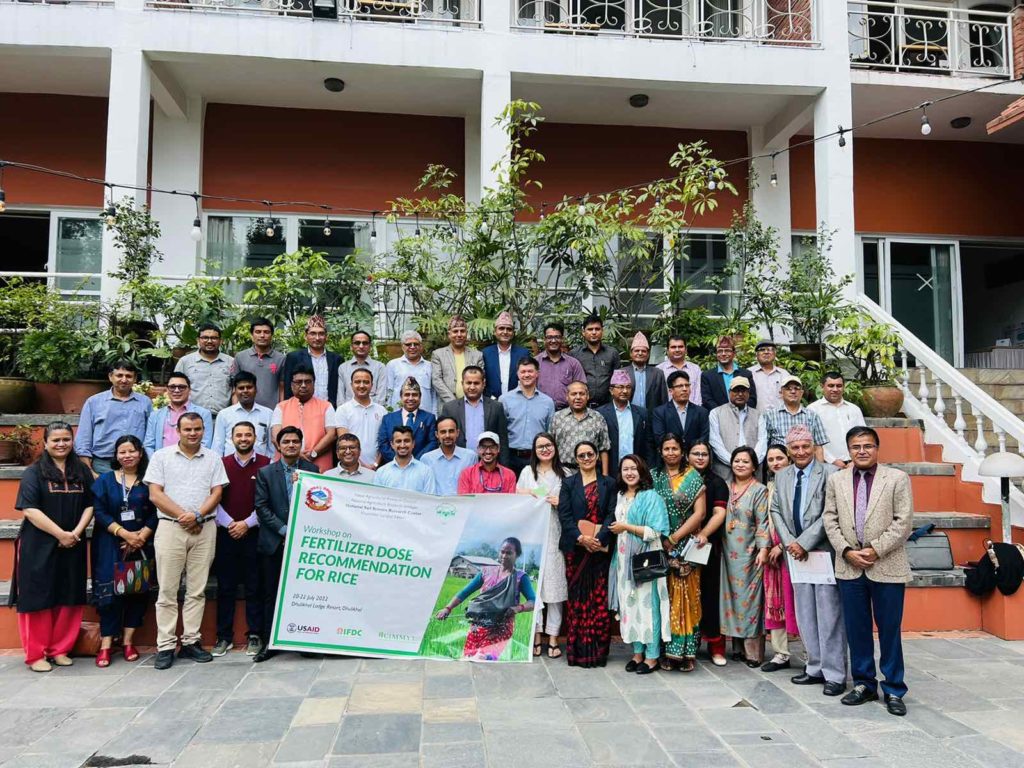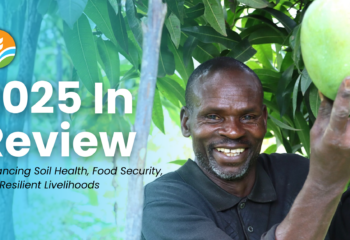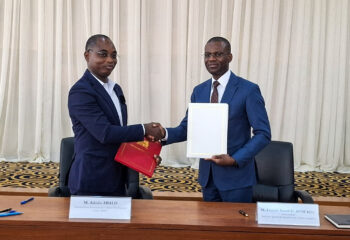
The Nepal Agricultural Research Council (NARC) National Soil Science Research Center (NSSRC), in collaboration with Feed the Future Nepal Seed and Fertilizer Project, has recently launched site-specific fertilizer recommendations for rice for the first time in the country.
Previously, Nepal had implemented the blanket approach of fertilizer recommendations developed four decades ago. This assumed the entire country as a domain despite the heterogeneity in soils, other biophysical conditions, and agronomic management practices, including crop variety. The amount of nutrients recommended for a particular crop was the same for the three major, but diverse, geographic regions – the terai, hills, and mountains. Although soil fertility management recommendations should be updated periodically, generally every five years, those for Nepal had not been updated since 1976.
The launch was conducted during a three-day workshop entitled “Fertilizer Dose Recommendations for Rice,” held July 20-22, 2022, in Dhulikhel, Nepal. The workshop consisted of several technical sessions, as well as inaugural and closing sessions. Dr. Rajendra Mishra, Joint Secretary of the Ministry of Agriculture and Livestock Development (MoALD), and Dr. Keshab Babu Koirala, Crop and Horticulture Director of NARC, jointly welcomed the participants. In the technical sessions, soil scientists and agronomists from various NARC research stations presented the results of field trial data.
The NSAF team introduced the approach of domain-specific fertilizer recommendations and use of modeling for replicating recommendations across different zones. The site-specific approach considers the targeted attainable yield at a particular farm, indigenous nutrient supply based on soil fertility status, agro-climatic conditions, and crop management practices, such as crop variety and irrigation regime. The workshop also advocated the use of a machine learning approach, including modeling (e.g., QUantative Evaluation of Fertility in the Tropical Soils, or QUEFTS), for extrapolating recommendations to other areas and crops.
Dr. Shree Prasad Vista, Chief of NSSRC, summarized the output of the technical sessions and presented the fertilizer recommendations for rice. The country has been divided into different zones, four for the terai (Eastern, Central, Western and Far Western), one for the inner terai, and one for the hills. For now, the recommendations include three major nutrients (NPK) and micronutrients zinc and boron, as well as organic inputs, based on nutrient omission trials and optimum nutrient rate trials.
The workshop was attended by Dr. Govinda Prasad Sharma, Secretary of MoALD; Dr. Deepak Bhandari, Executive Director of NARC; the joint secretaries of MoALD; the Director General of the Department of Agriculture (DoA); a representative of the U.S. Agency for International Development (USAID); secretaries from the Provincial Ministry of Land Management, Agriculture and Cooperatives; the chiefs of NARC commodity programs; NARC soil scientists; university professors; retired soil scientists; and other high-level government officials.
“I thank NARC for this historic work on updating the fertilizer recommendations after 46 years. Now we are moving towards sustainable soil fertility management by adopting site-specific fertilizer recommendations,” said Dr. Sharma in the closing session. Dr. Bhandari thanked all scientists involved, including those from the NSAF project and USAID, for this great work. He noted, “It is our pleasure to move from the blanket approach to the site-specific approach. This is a milestone for agricultural research in the country.” Jason Seuc, Director of the USAID Economic Growth Office, emphasized the importance of soil fertility management for achieving the food security target set by the government. Seuc further added, “Sustainable soil fertility is critical not only for achieving food security, but also reducing environmental pollution.”
The workshop was followed by a panel discussion on “Linking Research to Extension” to scale out new recommendations to a large number of farmers though active involvement of three tiers of the government.
The International Fertilizer Development Center (IFDC) is implementing fertilizer sector-related activities for the Feed the Future Nepal Seed and Fertilizer project as a subcontractor of the International Maize and Wheat Improvement Center (CIMMYT).




